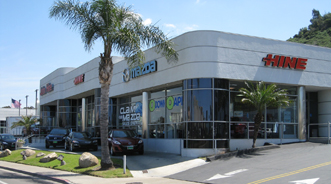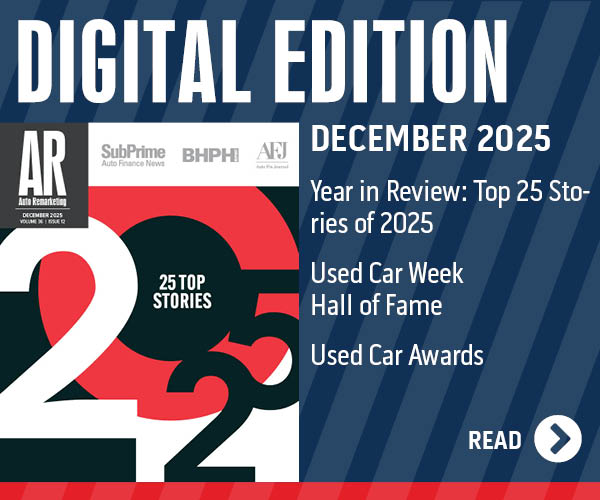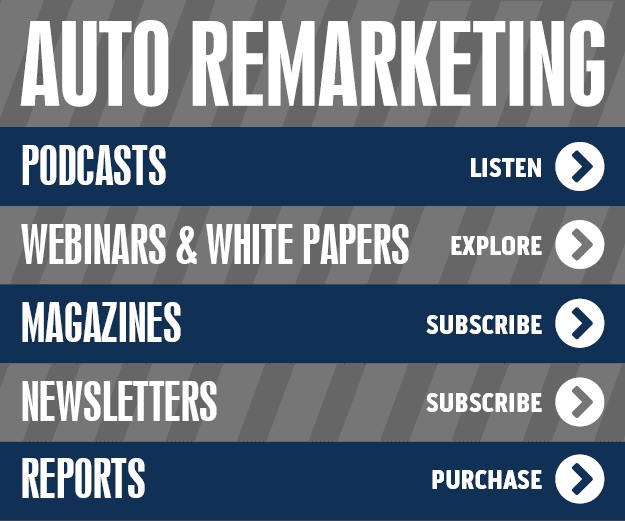SoCal Mazda Dealer Mixes Innovative & Old-School Strategies in CPO Market

By subscribing, you agree to receive communications from Auto Remarketing and our partners in accordance with our Privacy Policy. We may share your information with select partners and sponsors who may contact you about their products and services. You may unsubscribe at any time.
SAN DIEGO –
John Hine does not shy away from unique and innovative tactics when it comes to the certified pre-owned operations at his pair of Mazda stores in Southern California.
In fact, the dealer principal of two of the nation’s top 30 Mazda CPO outlets recently shared with Auto Remarketing this spring a few Web-savvy approaches for sourcing and marketing certified vehicles.
But he’s also able to go “old school” in his approach, as a paper-based daily client log for all customers (new and used) would indicate.
Either way, Hine’s various CPO strategies have helped him become one of the most successful dealers for Mazda certified in the country.
Through April, his John Hine Mazda store in San Diego had ranked No. 2 regionally for CPO sales and No. 9 nationally, according to Mazda. His John Hine Mazda Temecula store was No. 6 in the Western region and No. 28 nationally.
The Temecula store, which opened in 2007, is by far the newest of the two and is what is referred to as a “Retail Revolution” store, essentially acting as a showcase facility. The San Diego store has been a Mazda dealership since 1971 after opening in 1957.
Subscribe to Auto Remarketing to stay informed and stay ahead.
By subscribing, you agree to receive communications from Auto Remarketing and our partners in accordance with our Privacy Policy. We may share your information with select partners and sponsors who may contact you about their products and services. You may unsubscribe at any time.
“John Hine is successful with the certified pre-owned program because he actively sources cars and consistently follows the certification process,” Eric Watson, group manager of remarketing and CPO for Mazda North American Operations, said this spring.
“He certifies every used Mazda that meets the certification standard and trains his employees on the customer benefits of the CPO program,” he added.
Specifically, during the first quarter, the San Diego store sold 118 used units, 40 of which were certified. The Temecula store moved 132 used units, 31 of which were CPO.
On the new-car side, he sold 187 new vehicles in San Diego during the first quarter and 129 units in Temecula.
Sourcing Challenges
Of course, success is not easy. The sourcing aspect, in particular, can be quite challenging for a CPO operation these days.
In fact, Hine called the used supply shortage the “big gorilla” in the room.
And with Mazda being a smaller automaker than some of its peers in the U.S., he said that for Mazda dealers, it can be especially tough finding CPO-worthy cars because there aren’t as many units in the market.
Closed auctions for Mazda dealers can also be quite sparse.
“It’s very challenging to buy these cars,” Hine said at the time of the interview. “There’s not a big pool of them out there.”
So, the dealership must resort to other strategies.
Hine touts one particular online practice among the especially effective certified-sourcing strategies his stores employ.
Basically, the dealerships utilize AutoTrader.com to generate lists of private-party Mazda sellers.
The dealerships print out the lists and divvy them up amongst the sales personnel, who then call the sellers of the vehicles that are most ideal for CPO and schedule appraisal appointments. The appraisal is good for seven days.
“Usually, a private-party vehicle is one of the nicer vehicles you can find,” Hine pointed out.
Explaining the strategy in more detail, Dave Miller, general manager and vice president at the San Diego store, noted: “We emphasize the benefit of selling to us. We can make their payoff, give them a check for the car right away and eliminate a lot of the risk and frustration of trying to sell it on their own. It’s a win-win for everyone, especially right now in this market.”
The salesperson is incentivized for the sourcing, as well, Hine pointed out.
Marketing Strategy
Moving along, Hine also shared how the Web has helped in another aspect of the CPO segment: marketing the vehicles.
Hine recently ran a program with www.signonsandiego.com, which is the website of The San Diego Union-Tribune newspaper, for his San Diego location.
The campaign involved a video image of Hine popping into the website screen from the side of the page, essentially walking right into the screen and talking about the benefits of CPO. By clicking through, the customer was led directly to the CPO inventory listings page.
Miller called it a “beefed-up version of a banner ad.”
Through May 11, the program — which actually wrapped up May 18 after running for about a month — had generated 225,000 unique impressions and 1,112 customer click-throughs to the CPO page.
“I think it’s gotten pretty decent exposure to our CPO vehicles,” Miller shared.
Maintaining Loyalty
While sourcing and marketing may be important pieces to the CPO puzzle, customer retention also plays a big part.
Hine stressed that the email component of follow-up is critical, emphasizing how important it is to stay in touch with customers at least once a month.
Maintaining the current pool of customers a store has is vital to a dealership, Hine stressed.
“Your CRM marketing is critical,” he shared.
Hine shared an experience he had visiting Albi Mazda in Montreal, Canada.
During the three-day trip, Hine found that: “One of the biggest things in the meeting was tracking your customers.”
A dealership has to be accountable for its existing customer traffic and business.
“If you’re not managing those, why are you looking elsewhere (for additional business)?” he stressed. “You’d be surprised at how much you can get out of your own customer base, and they’re the most loyal.”
What Hine took back from the meeting and integrated into his own stores was a basic, but rather effective way of managing visitor traffic.
Both of Hine’s Mazda stores now use a paper log-sheet that hangs in the office. The daily client log features two charts. On the left side of the page is a 13-column chart of “first up” shoppers, meaning the consumers are on their first trip in to look at inventory.
The columns include such items as the store representative’s name, the client’s name, the model looked at, the trade and whether there was a demonstration or write-up, among other items.
There is also a “be back” chart with five columns, giving the name of the representative, the time of day, client, comments, manager, and a space to check off if the car is sold.
The charts are then subdivided into different days.
“Every single customer that walks onto the property gets logged on to the board,” Miller said, noting that the chart gives the dealership a central spot to see everything.
“It drives the notion home that follow-up is key,” Miller stressed.
He added that the chart is “not a real pretty thing, but it definitely gets the point across.”
Hine also emphasized that in terms of their approach to CPO customers: “We treat our CPOV customers just like we treat our new-vehicle customers.”
They go through a new owner orientation where they are given a “goodie bag” that includes all kinds of items like pertinent vehicle information, discounts, service offerings and a gift of a cap or pen.
The customer is also taken on a tour of the collision center, visits the parts department store, and meets with the service manager as well to explain the scheduled maintenance.
Also explained to the CPO customer are things like the loaner car program, reduced rate for rentals during vehicle service and the free shuttle service.
Discussing the aspect of customer loyalty in more detail, Watson said, “John understands that the value of a CPO sale goes beyond the selling gross. CPO adds incremental revenue opportunities with internal service repairs, greater F&I opportunities, a higher propensity for future service business and increased dealership loyalty for a future new or CPO purchases.”


